Sneaking-Up on 1.5 Million
Last night's bus trip broke with traveling tradition in several ways. First, we were surprised to head right back to Potosi and then follow through in the direction of LaPaz. Second, the operators actually made several restroom breaks along the way (in addition to a functioning "on bus" option), which was a nice change from being locked in the body of the bus while the drivers went off to take care of business. And finally, bus origination departure time can be relied upon, but after that travel is an exercise in ever increasing delay. So, imagine our surprise to arrive in La Paz a few hours early at around 6:00 am? We were still on the verge of sleep when the coach came to a stop on city streets. (The bus driver didn't feel like winding his way up to the actual station, so expelled passengers about a mile short of the mark.)

This premature exodus must be a common occurrence, because cabs flocked around the bus to transport the willing to local destinations. We took a short ride up the valley slope to Calle Illampu, which looked pretty desolate.
As we approached Calle Santa Cruz, one of the main open market areas, vendors were busy preparing for the start of the day.
From the hotel room vista, the relative size of Bolivia's largest city couldn't actively be grasped in the early morning fog blanket. Somewhere, out in the mist over 1.5 million residents were either sleeping, preparing for their morning, or already hard at work. After a ragged night's bus laden attempted rest, there were no arguments against taking a nap.
Mid-morning brought a differing view of this basin city. The bulk of La Paz's residents live in the sloping bowl hillsides or over its rim in el alto. Wealth and status have a direct correlation to altitudinal positioning. La Paz rests over 2.5 miles up, or roughly 3,660 meters above sea level. At this elevation hundreds of meters make a noticeable difference in quality of life and oxygenation, so the closer one lives to the bottom of the valley, the higher the property value. Our hotel was on the edge of more struggling neighborhoods, which may or may not have utilities.
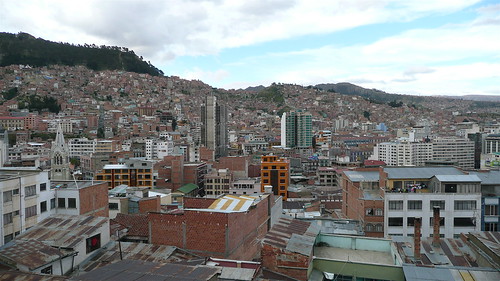
Regenerated, Lipika and I headed downhill to the Plaza de San Francisco. The massive church was closed, but the scene generated a snapshot of typical Bolivian life; in the shadow of Spanish colonialism and oppression, locals seek shelter from the elements, snack on maize, and the dominant female matriarch looms large.
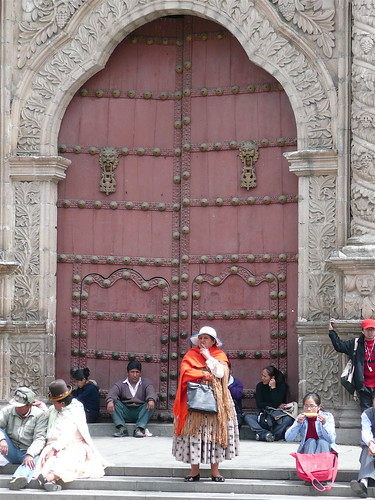
La Paz maintains an endemic interchange of pedestrians and vehicles occupying a tangle of roads and sidewalks, who's individual function is sometimes confused or interchangeable. The vehicles are mostly dated, but the buses are especially impressive for antiquated design and durability. This former "gold rush" town, founded in 1548 by Alonso de Mendoza, seems to have paved the winding and muddy horse/mule trails to form a macadam, cobble stone, and gravel labyrinth.
One of my goals, in traveling, is to visit as many different modern art museums as possible. La Paz actually has a decent rendition, for a struggling third world environ.
No photography was permitted inside, but a few external sculptures played the visually surrogate themes of internal artwork. This particular installment symbolized the sacrifice made by indigenous peoples, in the mining industry, to support the wealth of ruling Spanish colonizing forces, with their close governmental/missionary connection to the Catholic church.
Bolivians, especially the current ruling party, share an emphasized glamorization of all things native, especially symbolic feast and celebration elements. So the other dominant theme of both this sculpture and the museum was the indulgence of native expression. (There is obviously nothing inherently wrong with this, but the overabundance arguable swayed Museo de Arte Contemporaneo in the direction of a native arts collection, leaving diversity to the non-Boliviano artists displayed.)
After the museum, we signed up for our following morning biking expedition (down the "Death Road") and headed to a cafe for a mid-afternoon snack. Petty theft is as common here as any other city, but one of the deterrents was pretty clever. By simply using the chain and clip, attached to a solid chair frame, the absent minded "purse grab" could be slowed to near elimination. (NYC restaurateurs may want to think of installing something like this.)
Clearing evening skies revealed one of the other wonders of La Paz environs, amazing mountains. Mt. Illamani soars to 6402 meters or just shy of 4 miles into the stratosphere. Mt. Illamani is only one of six mountains visible in LaPaz, depending on vantage point. Tomorrow, we will start our bike ride just to the left of this monster, at the summit divide separating Illamani and it's alpine neighbor.
Meanwhile, despite approaching dusk, the day is not lost for "patch shopping". In an attempt to find flags or "banderas" for every South American country visited, I wandered the Calle de Santa Cruz...
... only to find boundless opportunity to purchase random apparel and footwear, but no patches. Oh well, there are more countries and markets to explore, in time.
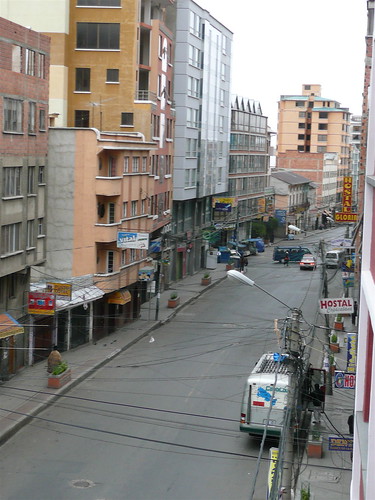
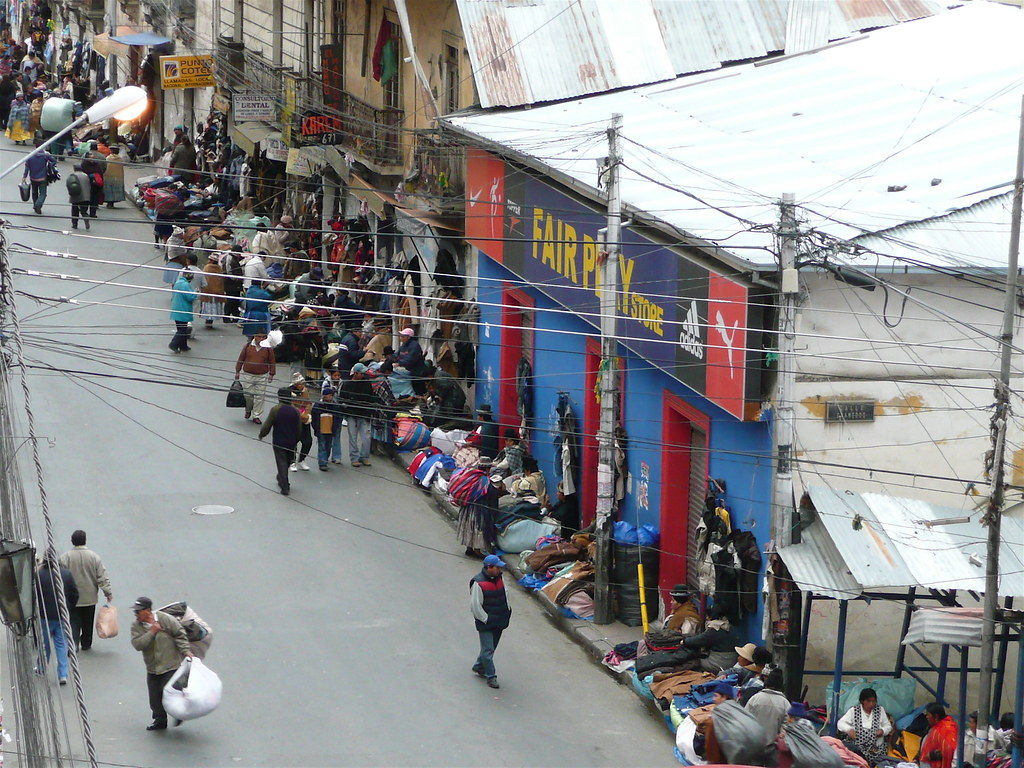


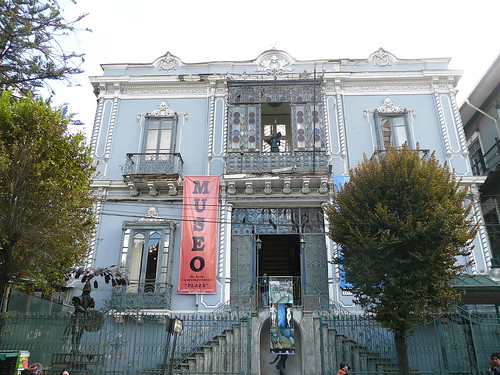

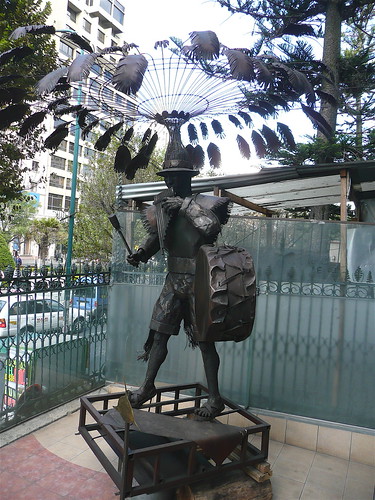
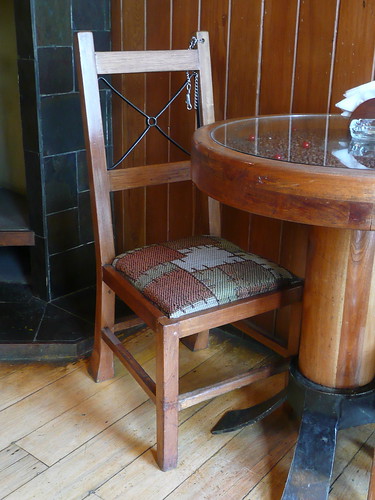
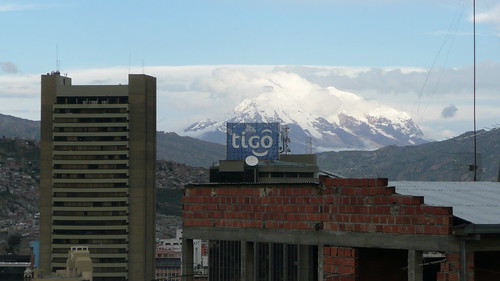
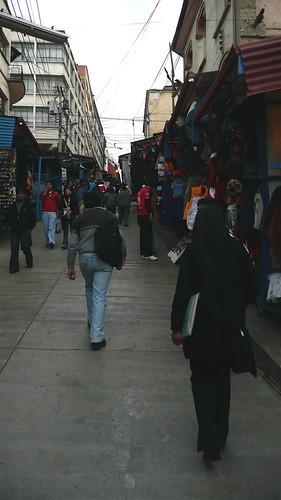
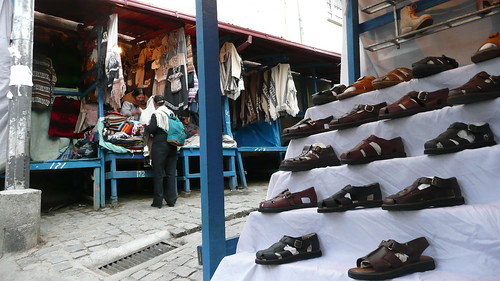
No comments:
Post a Comment